| |
|
Xiamen Oil Paintings, Wholesale Direct!
|
|
100% hand painted, 100% cotton canvas, 100% money back if not satisfaction. |
|
|
|
|
ART WORKS INDEX
A
B
C
D
E
F
G
H
I
J
K
L
M
N
O
P
Q
R
S
T
U
V
W
X
Y
Z
|
|
ARTISTS INDEX
A
B
C
D
E
F
G
H
I
J
K
L
M
N
O
P
Q
R
S
T
U
V
W
X
Y
Z
|
|
|
|
 |
Philip Wilson Steer
|
|
English Painter, 1860-1942
was an English artist. Philip Wilson Steer was born in Birkenhead, the son of the portrait painter Philip Steer (1810-1871). After finding the examinations of the Civil Service too demanding, he became an artist in 1878. He studied at the Gloucester School of Art and then from 1880 to 1881 at the South Kensington Drawing Schools. He was rejected by the Royal Academy of Art and so studied in Paris between 1882 and 1884. He studied at the Acad??mie Julian, and then in the École des Beaux Arts under Cabanel. There he became one of the few English Impressionists. He is known for his landscapes, such as 'The Beach at Walberswick' (1890; Tate Gallery, London). He became a leader (with Walter Sickert) of the English Impressionist movement and was one of the founders of the New English Art Club in 1886. During the First World War, he was recruited by Lord Beaverbrook, the Minister of Information, to paint pictures of the Royal Navy.
|
|
 |
Petrich, Soma Orlai
|
|
Hungarian, 1822-1880
was a Hungarian painter. Petrich was born to a Serbian father and Hungarian mother. He originally wanted to become a writer. He was a pupil of Jakab Marastoni in 1846 and attended F. Waldmuller's school in Vienna from 1847. He often painted historical themese and in his lithographs he portrayed experiences during the war of independence. He studied at Kaulbach in Munich from 1850. He painted "The Corpse of Louis II" in 1851,
|
|
 |
Peter Snayers
|
|
(1592 - 1666 or 1667) was a Flemish Baroque painter known for representations of historical battle scenes.Born in Antwerp, he studied under Sebastiaen Vrancx before joining Antwerp's Guild of St. Luke in 1612. By 1628, Snayers was a citizen in Brussels.
|
|
|
|
|
|
 |
Peter Purves Smith
|
|
Peter Purves Smith (26 March 1912 - 23 July 1949), born Charles Roderick Purves Smith, was an Australian painter. Born in Melbourne, Purves Smith studied at the Grosvenor School of Modern Art in London and under progressive art teacher George Bell in Melbourne.
|
|
 |
percy bysshe shelley
|
|
Born: 4 August 1792
Birthplace: Near Sussex, England
Died: 8 July 1822 (drowning)
Best Known As: 19th century romantic poet
|
|
 |
Pedro Sanchez
|
|
Spanish Early Renaissance Painter, active ca.1454-1468
|
|
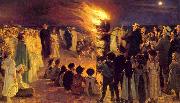 |
Peder Severin Kroyer
|
|
Norwegian-born Danish Painter, 1851-1909
Norwegian-Danish painter, was born in Stavanger, Norway to Ellen Cecilie Gjesdal. He is one of the best known and beloved, and undeniably the most colorful of the Skagen Painters, a community of Danish and Nordic artists who lived, gathered or worked in Skagen, Denmark, especially during the final decades of the 1800s. Krøyer was the unofficial leader of the group. The mother having been judged unfit, he was given to be cared for by Gjesdal's sister and the sister's husband. Along with the foster parents, he moved to Copenhagen soon afterwards. He began his art education at nine years of age under private tutelage, and was enrolled in Copenhagen's Technical Institute the following year. In 1870 at the age of 19 he completed his studies at the Royal Danish Academy of Art (Det Kongelige Danske Kunstakademi), where he studied with Frederik Vermehren. In 1873 he was awarded the gold medal and a scholarship. His official debut as a painter was in 1871 at Charlottenborg with a portrait of a friend, painter Frans Schwartz. He exhibited regularly at Charlottenborg throughout his lifetime. In 1874 Heinrich Hirschsprung bought his first painting from Krøyer,
|
|
 |
Peder Severin Kroyer
|
|
(23 July 1851 - 21 November 1909), known as P.S. Krøyer, was a Norwegian-Danish painter. He is one of the best known and beloved, and undeniably the most colorful of the Skagen Painters, a community of Danish and Nordic artists who lived, gathered or worked in Skagen, Denmark, especially during the final decades of the 19th century. Krøyer was the unofficial leader of the group.
|
|
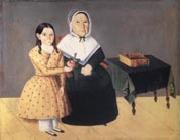 |
Peck Sheldon
|
|
American portrait painter and artist
b.1797 d.1868
American painter. A self-taught painter, he used his family as subjects in his early works, employing dark colours against flat backgrounds. After moving to Jordan, NY, in 1828 he used brighter colours and included more detail. He continued to paint on panel, almost always making half-length portraits characterized by such features as a broad brow, a wide, intense stare from detailed eyes and the use of a decorative brushstroke
|
|
 |
Peale, Sarah Miriam
|
|
American Painter, 1800-1885
Painter, daughter of James Peale. The most notable of James Peale's painting daughters, she also studied with her uncle Charles Willson Peale and her cousin Rembrandt Peale, from whom she developed her talent for colour and precision in details. As studio assistant to her father, she occasionally introduced into his work bright and intricate fabrics. Her career began in 1817 with the exhibition of Flowers at the Pennsylvania Academy of the Fine Arts. In the 1820s she painted in Baltimore and Philadelphia; in 1824 she was elected to the Pennsylvania Academy. From 1831 to 1846 she maintained her studio in Baltimore where she was a popular portrait painter, producing unpretentious but intelligent and occasionally romantic portraits characterized by a fine concern for materials, as in Mrs Perry Eccleston Noel (c. 1822; Baltimore, Mus. & Lib. MD Hist.). Her sitters included such prominent politicians as Daniel Webster (1842; St Louis, MO Hist. Soc. Mus.) and Abel Park Upshur (1842; Baltimore, Mus. & Lib. MD Hist.). In 1847 Sarah moved to St Louis, MO, where for 32 years she was in great demand. From 1859 her still-lifes won prizes at the St Louis fairs; they were loosely painted works different from the tightly controlled table-top pieces of her father and sister. Sarah's portraiture also changed, from the elegant, precise Neo-classicism learnt from her cousin Rembrandt to a looser,
|
|
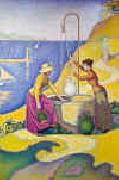 |
Paul Signac
|
|
1863-1935
French
Paul Signac Galleries
Paul Victor Jules Signac was born in Paris on November 11, 1863. He followed a course of training in architecture before deciding at the age of 18 to pursue a career as a painter. He sailed around the coasts of Europe, painting the landscapes he encountered. He also painted scenes of cities in France in his later years.
In 1884 he met Claude Monet and Georges Seurat. He was struck by the systematic working methods of Seurat and by his theory of colours and became Seurat's faithful supporter. Under his influence he abandoned the short brushstrokes of impressionism to experiment with scientifically juxtaposed small dots of pure colour, intended to combine and blend not on the canvas but in the viewer's eye, the defining feature of pointillism.
Many of Signac's paintings are of the French coast. He left the capital each summer, to stay in the south of France in the village of Collioure or at St. Tropez, where he bought a house and invited his friends. In March 1889, he visited Vincent van Gogh at Arles. The next year he made a short trip to Italy, seeing Genoa, Florence, and Naples.
The Port of Saint-Tropez, oil on canvas, 1901Signac loved sailing and began to travel in 1892, sailing a small boat to almost all the ports of France, to Holland, and around the Mediterranean as far as Constantinople, basing his boat at St. Tropez, which he "discovered". From his various ports of call, Signac brought back vibrant, colourful watercolors, sketched rapidly from nature. From these sketches, he painted large studio canvases that are carefully worked out in small, mosaic-like squares of color, quite different from the tiny, variegated dots previously used by Seurat.
Signac himself experimented with various media. As well as oil paintings and watercolours he made etchings, lithographs, and many pen-and-ink sketches composed of small, laborious dots. The neo-impressionists influenced the next generation: Signac inspired Henri Matisse and Andr?? Derain in particular, thus playing a decisive role in the evolution of Fauvism.
As president of the Societe des Artistes Ind??pendants from 1908 until his death, Signac encouraged younger artists (he was the first to buy a painting by Matisse) by exhibiting the controversial works of the Fauves and the Cubists.
|
|
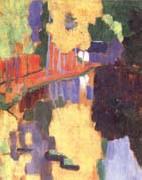 |
Paul Serusier
|
|
French Painter, 1863-1927
was a French painter who was a pioneer of abstract art and an inspiration for the avant-garde Nabi movement. He studied at the Academie Julian and was a monitor there in the mid 1880s. In the summer of 1888 he travelled to Pont-Aven and joined the small group of artists centered there around Paul Gauguin. While at the Pont-Aven artist's colony he painted a picture that became known as The Talisman, under the close supervision of Gauguin. The picture was an extreme exercise in Cloisonnism that approximated to pure abstraction. He was a Post-Impressionist painter, a part of the group of painters called Les Nabis. Serusier along with Paul Gauguin named the group. Pierre Bonnard, Edouard Vuillard and Maurice Denis became the best known of the group, but at the time they were somewhat peripheral to the core group.
|
|
|
|
|
|
|
|
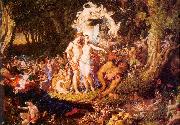 |
Paton, Sir Joseph Noel
|
|
English, 1824-1901
Scottish painter, illustrator, sculptor and collector. From his earliest years he drew avidly, seeking inspiration from ancient history, the Bible and from tales of romance and legend. His father was a keen antiquarian, and his habit of collecting items of historical interest and artistic merit was inherited by his son who amassed a collection, which included arms and armour, now in the National Museum of Scotland, Edinburgh. He used items from the collection in a large number of his paintings such as 'I wonder who lived in there?' (1867; Mrs Eva No?l Findlay priv. col.), the Fairy Raid (1867; Glasgow A.G. & Mus.), In die Malo (1881) and Oskold and the Ell? Maids (1874). After three years as head designer in one of the biggest sewn-muslin factories in Paisley, Strathclyde, Paton went to London in 1842. Although he did not take a studentship at the Royal Academy Schools, it was there that he met John Everett Millais, and they became lifelong friends. He won prizes in the Westminster Hall competitions in 1845 and 1847,
|
|
|
|
 |
Palmer, Samuel
|
|
English, 1805-1881
English painter, draughtsman and etcher. Palmer was a key figure of English Romantic painting who represented, at least in his early work, its pastoral, intuitive and nostalgic aspects at their most intense. He is widely described as a visionary and linked with his friend and mentor William Blake, though he stood at an almost opposite extreme in his commitment to landscape and his innocent approach to its imagery.
|
|
|
|
 |
P.C. Skovgaard
|
|
(known as P.C. Skovgaard), (4 April 1817 - 13 April 1875), Danish national romantic landscape painter, was born near Ringsted to farmer Tham Masmann Skovgaard and his wife Cathrine Elisabeth. He is one of the main figures associated with the Golden Age of Danish Painting. He is especially known for his large scale portrayals of the Danish landscape.
The family had to leave the farm when he was six years old. They moved to Vejby in north Sjælland where his father earned his living as a grocer. Already as a young child he impressed his family with his artistic abilities. His mother, who had studied art under flower painter Claudius Ditlev Fritsch, gave him instructions in drawing until he was confirmed and could be sent to Copenhagen for training at the Royal Danish Academy of Art (Det Kongelige Danske Kunstakademi).
|
|
 |
Otto Scholderer
|
|
(25 January 1834 - 22 January 1902) was a German painter.
He was born in Frankfurt am Main. On completing his schooling, Scholderer went to the Städel academy of arts in 1849, where he remained until 1851. Among his teachers were the art historian Johann David Passavant and the painter Jakob Becker. Subsequently, Scholderer established himself in Städel as a freelance painter. During this period his friendship with Victor Meller began; Scholderer became his brother-in-law in 1868.
Through Meller, Scholderer became acquainted with the works of Gustave Courbet. Scholderer made several short study trips to Paris between 1857 and 1858, where he became friends with Henri Fantin-Latour and Édouard Manet, whose influence can be seen in his subsequent work. Fantin-Latour depicted Scholderer in his picture Studio aux Batignolles . Starting from 1858, Scholderer worked and lived predominantly in Kronberg in Taunus, where his colleagues included Anton Burger, Peter Burnitz and Louis Eysen; he was close to the Kronberger painter colony.
In 1866, Scholderer established himself in Desseldorf and made friends with Hans Thoma. With Thoma, Scholderer went in 1868 to Paris and returned to Germany only shortly before the outbreak of the French-German War. First Scholderer established himself in Munich, renewing his friendship with Wilhelm Leibl and becoming one of the artists of the Leibl-Kreis (Leibl circle). At the beginning of 1871 he went to London and worked there till the autumn of 1899. After 1899, Scholderer returned to his hometown of Frankfurt, where he died at the age of almost 68 years on 22 January 1902.
Otto Scholderer's art, initially dominated by landscapes, later consisted primarily of portraits and still lifes. The important connection between the romantic period and the Impressionists is evident in his work.
|
|
 |
Otto Marseus van Schrieck
|
|
(ca. 1619, Nijmegen - buried June 22, 1678, Amsterdam) was a painter in the Dutch Golden Age.
Marseus van Schrieck spent the years 1648-1657 in Rome and Florence with the painters Matthias Withoos and Willem van Aelst, after which he settled in Amsterdam. He is best known for his paintings of forest flora and fauna. In Arnold Houbraken's biography of him, he mentions that he joined the Bentvueghels in Rome and was called the snuffelaer, or "sniffer", because he was always sniffing strange lizards and snakes. He quotes his wife, who apparently survived him by two husbands and was still alive when he wrote the book. He wrote that she said that Otto kept snakes and lizards in a shed at the back of his house, and also on a piece of land outside the city that was walled in for this purpose.
|
|
|
|
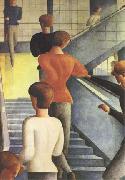 |
Oskar Schlemmer
|
|
German Abstract Painter, 1888-1943
German painter, sculptor, choreographer and stage designer. After the death of his parents he lived with his sister at Geppingen, and in Stuttgart from 1903 to 1905 he served an apprenticeship at a workshop specializing in marquetry while attending classes at the Kunstgewerbeschule. He continued his studies on a bursary from 1906 to 1911 at the Kunstakademie in Stuttgart under the plein-air landscape painters Christian Landenberger (1862-1927) and Friedrich von Keller (1840-1914). In 1911-12 he lived in Berlin, where he produced paintings such as Hunting Lodge, Grunewald (1911; Stuttgart, Staatsgal.) and Self-portrait (1912; Stuttgart, Staatsgal.) under the influence of Cubism. After returning to Stuttgart, Schlemmer studied under Adolf Helzel,
|
|
|
|
|
|
|
|
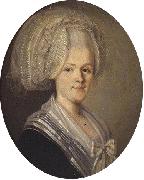 |
Nils Schillmark
|
|
Nils Schillmark (1745-1804)Aliases: Nils Schillmarch; Nils Schillmarck; Nils SkiellmarkProfessions: Portrait painter; Landscape painter; Painter.
(b Skellefteå, northern Sweden, 1745; d 1804). Finnish painter of Swedish birth. The son of a crofter, he was apprenticed in Stockholm to Pehr Fjellström, an artist and military officer. It is possible that Schillmark also studied at the Swedish Royal Academy of Art. He accompanied Fjellström on journeys to Finland and eventually moved there in 1773, first staying in Viaborg, the fortress situated off the shore near Helsinki, and later moving to the mainland and settling in Helsinki. In 1777 he began to receive commissions for portraits, and from then on he spent most of his life as a travelling portrait painter. His sitters came from both the bourgeoisie and the landed gentry, but they were widely spread across southern and western Finland. Occasionally Schillmark also received other kinds of commissions, for example for an altarpiece for the old stone church in Hattula (in situ). From 1787 Schillmark lived permanently in the town of Loviisa, but he continued to tour the estates of the neighbouring countryside. His only landscape paintings to have been preserved are from this year and show the town of Heinola and its new residence for the governor of the Uusimaa and Häme districts. A few years later Schillmark produced a number of still-life paintings for this building. It is possible that he spent some time in Stockholm during this period.
|
|
|
|
|
|
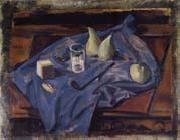 |
Nicolas de Stael
|
|
Russian Painter.1914-1955
was a painter known for his use of a thick impasto and his highly abstract landscape painting. He also worked with collage, illustration and textiles Nocolas de Stael was born in the family of a Russian Lieutenant General, Baron Vladimir Stael von Holstein, (a member of the Stael von Holstein family, and the last Commandant of the Peter and Paul Fortress) and his wife, Olga Sakhanskaya. De Stael's family was forced to emigrate to Poland in 1919 because of the Russian Revolution; Both, his father and stepmother, would die in Poland and the orphaned Nicolas de Stael would be sent with his older sister Marina to Brussels to live with a Russian family (1922). He eventually studied art at the Brussels Acad??mie royale des beaux-arts (1932). In the 1930s, he travelled throughout Europe, lived in Paris (1934) and in Morocco (1936) (where he first met his companion Jeannine Guillou, also a painter and who would appear in some of his paintings from 1941-1942) and Algeria. In 1936 he had his first exhibition of Byzantine style icons and watercolors at the Galerie Dietrich et Cie, Brussels. He joined the French Foreign Legion in 1939 and was demobilized in 1941.
|
|
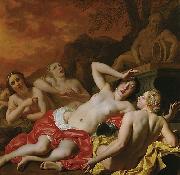 |
Nicolaes van Helt Stockade
|
|
(1614-1669), was a Dutch Golden Age painterAccording to Houbraken, Joost van den Vondel made a poem about him.
According to the RKD he became a master in the Antwerp Guild of Saint Luke in 1646 and worked on the city hall of Nijmegen and the Amsterdam City Hall.
|
|
|
|
|
|
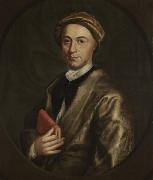 |
Nathaniel Smibert
|
|
(January 20, 1734 - November 8, 1756), was an artist in Boston, Massachusetts, in the mid-18th century. Born in Boston in 1734, he trained as a painter with his father, the artist John Smybert, and produced several portraits, notably of Ezra Stiles, architect Peter Harrison, and Dorothy Wendell (in the Collection of Dr John L Hale, Boston).
|
|
|
|
|
|
|
|
|
|
 |
Myles Birket Foster,RWS
|
|
1825-1899
English painter, illustrator and collector. After a short and unsatisfactory period working in the family brewing business, he was able to convince his Quaker parents to allow him to pursue a career in art. He was apprenticed to a wood-engraver, Ebenezer Landells (1808-60), who recognized Foster's talent for drawing and set him to work designing blocks for engraving. Foster also provided designs for Punch and the Illustrated London News. In 1846 he set up on his own as an illustrator. The rustic vignettes of the seasons that he contributed to the Illustrated London News and its counterpart, the Illustrated London Almanack, established him as a charming interpreter of the English countryside and rural life and led to his employment illustrating similar themes in other publications. During the 1850s his designs were much in demand; he was called upon to illustrate volumes of the poetry of Longfellow, Sir Walter Scott and John Milton.
|
|
|
|
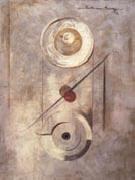 |
Morton Schamberg
|
|
American Painter and Architect ,
b.1881-d.1918
American painter and photographer. After training as an architect at the University of Pennsylvania, Philadelphia (A.B., 1903), he studied painting at the Pennsylvania Academy of the Fine Arts, also in Philadelphia, from 1903 to 1906 under William Merritt Chase, with whom he travelled to Europe. From 1907 to 1909 he lived mostly in Paris, where he saw the work of major avant-garde artists, including C?zanne, Picasso and Matisse, and benefited from contact with Leo Stein, an important collector and writer. By 1909 Schamberg had responded to the example of C?zanne's paintings, including simplified and more solid forms in his own work. Following his participation in the Armory Show in 1913, Cubism became the dominant element of his art, modified in such works as Figure B, Geometric Patterns
|
|
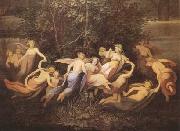 |
Moritz von Schwind
|
|
Austrian Romantic Painter, 1804-1871
Austrian painter and illustrator. He studied at the Akademie der Bildende K?nste in Vienna (1821-3), where he was influenced by the Biedermeier genre painter Peter Krafft and the Nazarene painter Ludwig Ferdinand Schnorr von Carolsfeld. He made copies after the Old Masters at the Belvedere in Vienna, exploring especially D?rer, Albrecht Altdorfer, Raphael and Titian, which completed his early, largely autodidactic experience of art. His friendship with Franz Schubert, the poet and playwright Franz Grillparzer and the painters Ferdinand and Friedrich Olivier, as well as the cultural environment of Biedermeier Vienna in his years there between 1823 and 1828, shaped his spiritual development as a painter. His love of music inspired his later 'symphonic' compositions and flowing linear rhythms. Extensive reading of the work of Romantic writers such as Achim von Arnim, Clemens von Brentano, Ludwig Tieck, Friedrich Heinrich von Hagen and the brothers Jacob and Wilhelm Grimm helped prepare his mature pictorial themes of fairytales, legends and sagas. He was unsuccessful as a painter and eked out a meagre livelihood by drawing naturalistic genre scenes for engravers, while occasionally selling a painting. Walk before the City Gate
|
|
 |
Michiel Sweerts
|
|
(29 September 1618-1664), also known as Michael Sweerts, was a Flemish painter of the Baroque period, active in Rome (1645-1656) in the style of the Bamboccianti. The Bamboccianti were known for depicting genre scenes of daily life, but Sweerts's contributions to this genre display greater stylistic mastery and social-philosophical sensitivity than many of his colleagues in this "school." Highly successful in Rome during his years there, Sweerts's reputation suffered a severe collapse not long after his death, lasting centuries; but thanks especially to the 2002 international monographic exhibition devoted entirely to him, Michael Sweerts: 1618-1664, he has begun once again to enjoy the esteem his work clearly merits.
Born in Brussels, he arrived in Rome in 1646, and rapidly moved into the circle of Flemish painters associated with Pieter van Laer (leader of the so-called Bamboccianti painters) and that resided near Santa Maria del Popolo. In 1647, he attended meetings of the Accademia di San Luca, although not as a member. Despite the fragmentary nature of evidence pertaining to his career in Rome and the post-mortem eclipse of his reputation, we know that Sweerts succeeded in creating for himself a sufficiently exalted reputation in the city so as to enter into the service of the ruling papal family itself, the Pamphilj, more specifically, Camillo Pamphilj, nephew of reigning Pope Innocent X who, at the encouragement of Camillo, bestowed upon Sweerts the papal title of Cavaliere di Cristo, the same honor enjoyed by the likes of Gian Lorenzo Bernini and Francesco Borromini. Despite working in the highest echelons of papal patronage in Rome, sometime between 1652 and 1654, for reasons unknown Sweerts left the Eternal City and returned to the North, and by 1656, he had returned to Brussels, where he joined the painter's guild. He joined the Paris Foreign Missions Society as a lay brother and became a devout Christian. In 1658 he made the guild a self portrait as a farewell gift and moved to Amsterdam, where he would oversee the building of a ship for travel with the aforementioned Missions Étrangeres to Palestine.
|
|
|
|
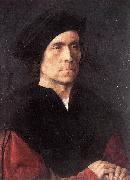 |
Michel Sittow
|
|
(c.1469-1525) was a painter from Reval (now Tallinn, Estonia) who was trained in the tradition of Early Netherlandish painting. For most of his life, Sittow worked as a court portrait painter, for Isabella of Castille, the Habsburgs and others in Spain and the Netherlands. He was one of the most important Flemish painters of the era.
|
|
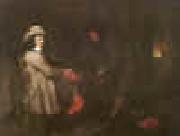 |
Michael Sweerts
|
|
Flemish
1618-1664
Michiel Sweerts (September 29, 1618 - 1664), also known as Michael Sweerts, was a Flemish painter of the Baroque period, active in Rome (1645-1656) in the style of the Bamboccianti. The Bamboccianti were known for depicting genre scenes of daily life.
Born in Brussels, he arrived in Rome in the mid 1640s, and rapidly moved into the circle of Flemish painters that had arrayed around Pieter van Laer, and that resided near Santa Maria del Popolo. In 1647, he attended meetings of the Accademia di San Luca, although not as a member. By 1659, he had returned to Brussels, where he joined the painter's guild.
He appears to have become mentally unstable in his last years. In Amsterdam, he joined the Jesuits as a "lay Brother" rather than a priest, and sailed from Marsaille to the East with a missionary group. Travelling to Jerusalem, and from there to Goa, where after causing tribulations to those around him, he died.
Sweerts is an enigmatic and difficult artist to categorize, since he seems to have absorbed a variety of influences to create an eclectic hybrid that can be described as a Netherlandish genre adaptation of an early tenebrist styles: a blend of Vermeer's genre of painting and Caravaggio-influenced full bodied figures.
|
|
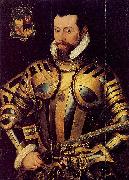 |
Meulen, Steven van der
|
|
Flemish Northern Renaissance Painter, active 1543-1568
Netherlandish painter active in England. He was a pupil of Willem van Cleve the younger (c. 1530-1564) in 1543 and was admitted to the Antwerp Guild of St Luke in 1552; by 1560 he had travelled to London, and he was naturalized in 1562. Van der Meulen brought with him a deep knowledge of the portrait style of Anthonis Mor. This sombre, shadowed style appealed to patrons at the English court who could not travel to Antwerp to sit to the greater artist. Early in 1561 an English merchant, John Dymoch, had visited Sweden in connection with negotiations for a marriage between Queen Elizabeth and Erik XIV, taking with him a Netherlandish painter described as 'Master Staffan', and it seems likely that this was van der Meulen. The King was much pleased with the resulting portrait of himself, for which he paid 100 daler
|
|
|
|
|
|
|
|
|
| Wholesale China Oil Painting Wholesale Oil Painting China Xiamen Portrait Reproduction on canvas Chinese Oil Painting Wholesale USA Oil Painting |
|
|
|
|
|